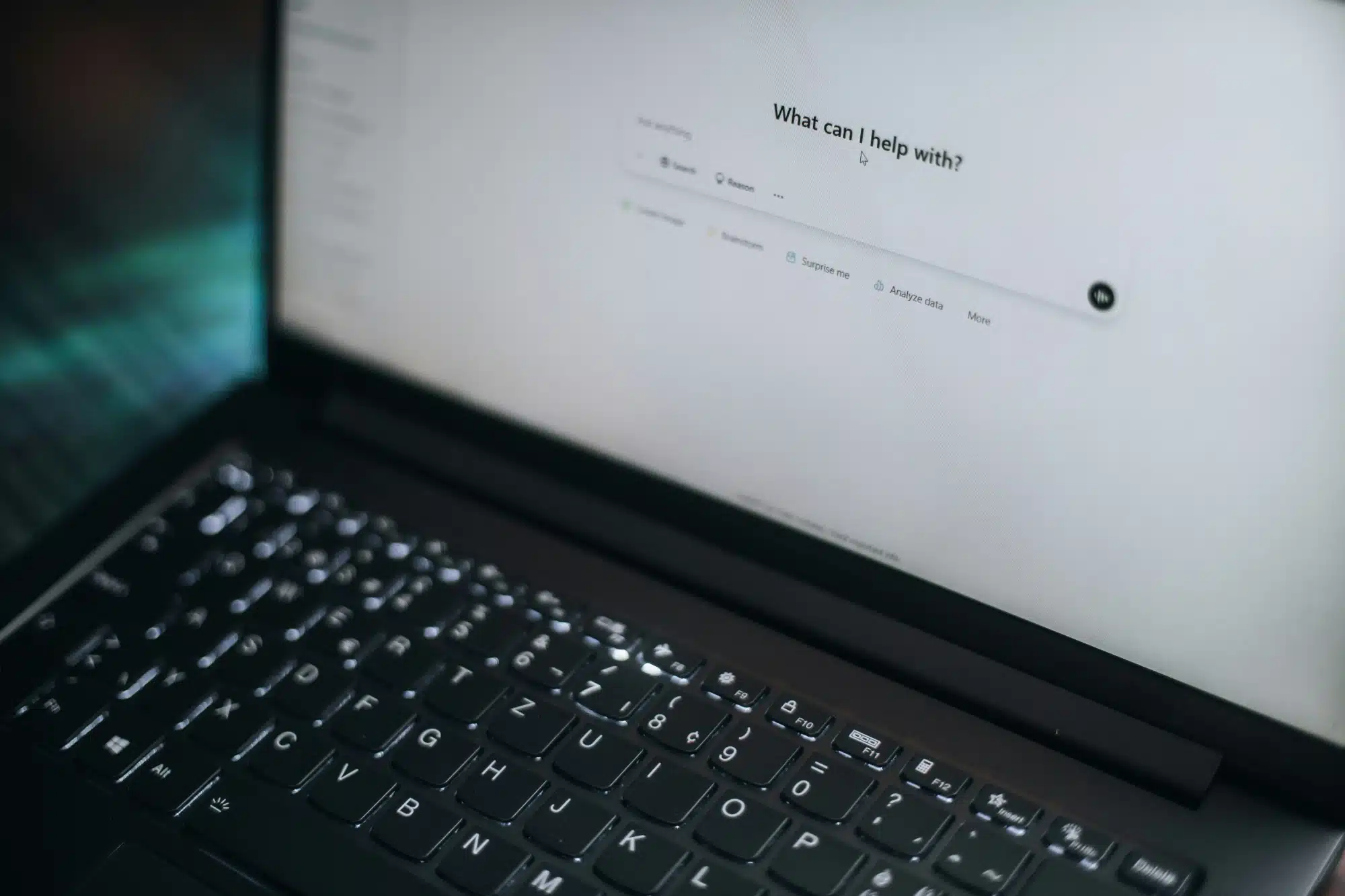Key Highlights
Here is a quick look at the biggest website and SEO misconceptions we are about to expose. Understanding these points is your first step toward a better digital marketing approach.
- Effective search engine optimization is an ongoing process, not a one-time setup.
- Focusing on quality and user intent is more important than stuffing web pages with keywords.
- A great user experience, driven by excellent website design, is critical for your SEO strategy.
- SEO is a long-term strategy; expecting immediate results from a Google search is unrealistic.
- AI tools are powerful assistants but cannot fully replace human expertise in content marketing.
- Building a strong backlink profile requires earning links through quality content, not buying them.
Introduction
Do you want your website to do better and get more leads? To do this, you need to know about search engine optimization. Many businesses start digital marketing with old ideas. These can stop growth. This guide will show you the top misunderstandings about websites and search engine optimization. It will help you use a better content marketing strategy.
When you put users first and follow today’s best practices, you can skip mistakes many people make. This will make your marketing strategy stronger. Also, you can work with an seo specialist to get lasting results in google search. Doing things the new way is important for long-term success in digital marketing and content marketing. Remember, user satisfaction matters most when you want to do well on search engines.
Top 10 Biggest Website and SEO Misconceptions (Exposed)
Getting started with search engine optimization might seem hard. You may see a lot of wrong information out there. If you believe these ideas that are not true, you could end up with a bad SEO strategy. You might use up your time and money and not get good search rankings. When things do not go right, you may focus only on showing up in results when you should try to get more useful leads or better user experience.
In the part below, we talk about the ten top things people get wrong about search engine optimization. If you learn what you should not do, you can make your digital marketing better. You can keep up with changes in search engine algorithms. You will also find what really helps with user experience and lifts your search rankings.

1. SEO is a One-Time Task, Not an Ongoing Process
Many people make the mistake of thinking that search engine optimization is something you start once and then forget about. You cannot do a few things to optimize a site and expect your search rankings to stay up forever. Search engine algorithms keep changing, and there are always others who want to get ahead of you. If you want good results from search engine optimization, you need to keep working on it over time.
A good SEO strategy is not something you set up once. You have to look at how a site is doing, check it for problems, and update your plan as things change. You should do site checks often to find technical issues. You also want to check performance by using tools like Google Search Console and pay attention to what your competitors are doing. Make sure to look at your keyword rankings and website traffic all the time. This helps you know what works and what does not.
Also, your site’s content needs to be worked on often. It is important to keep updating your content because search engines look at this when choosing if a site is still useful. This means you should audit your content, add new information often, and make new content when needed for changing user intent. If you want the best search rankings, a good plan for content management is key for the long run.
2. More Keywords Automatically Mean Higher Rankings
In the past, some people tried to get better search engine results by putting too many keywords on a page. This was called keyword stuffing. It does not work anymore. In fact, doing this can hurt your website. Now, Google algorithm updates make sure the search engine puts more value on content that is clear and helps people. It is not about how many times you use a phrase, but about giving good answers to what users want.
When you do keyword research, it is best to look for keywords that be about quality and have meaning. You want to find out what people need to know. Then make content that gives them those answers. Place relevant keywords in your article in a way that feels natural. Do not use them in every line just to have them there.
A better way to do this is:
- Focus on one main keyword phrase for each page.
- Add some related, long-tail keywords so the content fits what people look for.
- Use simple, user-friendly language and make sure to meet the searcher’s intent.
By using this plan, you can make good and useful content. You can rank better on a search engine and make your website easier for people to read.
3. Buying Backlinks Is an Effective Way to Rank Faster
The idea to quickly boost your site’s authority by buying backlinks might look good, but it is not a safe or strong off-page SEO strategy. Search engines see buying links as a clear rule break. If you get caught, you could lose your place in search results or be removed from them completely.
Search engine crawlers can spot fake or unusual link patterns. Instead of trying to trick this main ranking factor, you should focus on getting great backlinks the right way. That means you need to make high-quality, useful content that good websites want to link to and share.
Backlinks work kind of like a vote of confidence from one site to another. A strong SEO strategy is all about making content that is so helpful and smart that it gets links on its own. It’s true that this takes more time, but you end up with a strong and honest backlink list. Search engines reward this the most. As Search Engine Land says, earning solid links from trusted sites is a key part of any good SEO strategy.
4. Website Design Doesn’t Affect SEO Performance
Many businesses think that website design and SEO have nothing to do with each other. In truth, they are very much linked. If your website has bad design, you also get a bad user experience. This is important because search engines look at user experience when they rank your website. If people can’t find what they need or move around your site easily, they will leave. This tells Google that your page may not be useful.
The way your site is designed can directly affect the Core Web Vitals. Search engines use these to check user experience. Core Web Vitals are about how fast your site loads, how people move through the site, and how the pages look as they load. If your website loads slowly, is hard to use, or looks wrong as it loads, it will not rank well, even if you have good content.
To make your design help your SEO, you should focus on these things:
- Mobile-First Design: Make sure your site works well on mobile phones and all other devices.
- Fast Load Speed: Make images and code as small as you can so your pages load faster.
- Intuitive Navigation: Build a simple and clear menu so people and search engine crawlers can find what they want easily.
A great user experience will help people stay on your site. It also tells search engines that your website is a good place for people to get what they need.

5. Content Length Is All That Matters for Ranking
There is a common idea that longer content always does better in google search. But just writing more words does not make your page rank higher. While longer posts can work if they have a lot of good, helpful information, the total word count is not the most important ranking factor. For example, if you have a 3,000-word story that is not well written or doesn’t help the reader, it will not beat a clear and useful 800-word story that answers what people want to know.
The real way to win is to create quality content. Search engines look for pages that have useful, true facts and feel like an expert wrote them. Your content marketing and marketing strategy should aim to give people the best guide on that topic, no matter how long or short the post is.
Before you start to write, you should check the pages that show up at the top for your target keyword. This helps you know what people like and what they get out of those pages. Sometimes, a simple, short answer is best. Other times, people want a deep guide with lots of details. The most important thing is to be helpful and meet what people want – known as user intent. Let that and not just word count decide how long your content is.
6. You Only Need to Optimize for Google, Not Other Search Engines
While Google has most of the search engine market share, it is not good to overlook other major search engines. There are platforms like Bing and DuckDuckGo. They do millions of searches every day. These platforms can bring traffic to your business. Different people might use different search engines. If you focus on more than one, you can reach more people.
It is not hard to optimize your site for other search engines. Many search engine optimization best practices are the same for them as they are for Google. If you make quality content and give a good user experience, this will also help your ranking on Bing.
You should take time to submit your sitemap to Bing Webmaster Tools, just like you would with Google Search Console. In the United States, many people use these other search engines. By making sure your site shows up on these platforms, you get a chance to reach more people. This is an extra group of customers that some others may not be reaching.
7. Meta Tags Alone Can Influence Your Search Ranking
Meta tags help with SEO, but people often do not know how much they matter. Some say you just need to fix your page titles and meta description, and you will show up high in search results. While page titles and meta description are both good to work on, they are not the only thing that gets your page in the top search rankings. They are not the main ranking factor, but one part of the mix.
The title tag is more important than other meta tags. It shows as a big headline in the search results, and it tells search engines the main idea of your page. A good page title with the right keywords can help your search results go up. The meta description does not change your search rankings. Instead, it let people know what the page is about, so more people may want to click your link in the search results.
Here’s what you should do with meta tags:
- Page Titles: Be clear about what the page is about, add your main keyword, and keep it shorter than 60 characters.
- Meta Descriptions: Write a short ad that sums up the page and makes people want to click. Keep it under 160 characters.
- Meta Keywords: Skip this. Most search engines, like Google, do not use this any more, so there is no use in adding it.
8. Social Media Signals Directly Boost SEO Rankings
People often get confused about how social media and SEO connect. Some think the likes, shares, and followers you get on Facebook or X have a strong effect on your search rankings. But search engines like Google have said that social signals are not a direct ranking factor.
Still, does this mean social media has no use for digital marketing? Not at all. Even if it is not counted as a direct ranking factor by search engines, having social media gives you big benefits for your SEO. Sharing your stuff on social media helps more people see it. It brings more visits to your website and grows your brand awareness.
As more people find your posts, they might share your content on their websites or blogs. You can get valuable external links, and search engine crawlers do look at those links. So, you can see social media is good for getting your content out to more people and making your SEO plan stronger. It helps push your website higher in search rankings, even if it is not a direct ranking signal.
9. AI Tools Can Replace Human SEO Efforts Completely
The rise of artificial intelligence has brought strong AI tools into the world of content marketing. But thinking that these tools can completely replace a human SEO specialist is not true. AI can be good for things like keyword research, data work, and making content outlines. Still, it does not have the careful understanding that you get from a human.
For successful SEO, you need to be creative, think ahead, and really get what users want. AI cannot do all that yet. An SEO specialist looks at data with your bigger business goals in mind. They see small chances to do better, and they know how to make content that speaks to the target audience. When AI makes content, it often does not show real experience or skill, and both search engines and people look for that.
The best way is to use both AI tools and human skills for your seo strategy. Let AI do tasks that take up time and bring you facts, but have people guide your work, make sure the content is good, and have the final say. This helps you get the most out of both AI and human seo specialists for content marketing focused on user intent and strong results.
10. SEO Delivers Immediate Results
One mistake many people make is thinking that search engine optimization gives instant results. Unlike paid ads, where you see changes fast, SEO takes time to work. Search engines need time to look at, add, and check your website and its pages.
You might see better search traffic after a few months. Sometimes, it can take up to a year. This depends on things like how tough your market is, how old your website is, and how steady your work is. Search engine algorithms from places like Google Search are tricky, and it takes time for your website to build trust and show up on the first page.
You need both patience and persistence. If you use a good seo strategy, it will help you get strong, lasting visits from organic search over time. Treat search engine optimization as a way to help your brand show up better online in the future, not as a quick way to boost leads today.

Common Website Mistakes That Harm SEO
Many people get things wrong about SEO, but what really hurts is the small mistakes on a website. The technical and design slip-ups can stop search engines from going through your site the right way. This can lower where you show up in the search results. It also makes things bad for people who try to use your site.
If you forget about mobile users or make your site too hard to get around, what you write and show on your site won’t matter. These problems can undo the work you put into your page content. In the next parts, we will look at some common things that bring down SEO. They include slow site speed, poor Core Web Vitals, between-page details you miss, and site structure that is not easy to use. All of these make user experience worse.
Ignoring Mobile Optimization and Responsive Design
Many people now use mobile devices to go online. If you do not make your website work well on these devices, you could lose traffic. Search engines like Google use mobile-first indexing. This means the search engine will look at the mobile version of your site first when working out search rankings. If your website is not good on smartphones, you will see your ranking go down.
If a site does not use responsive design, people must pinch or zoom to read the content. This is not a good user experience. Often, they will leave your site fast, making the bounce rate go up. The search engine will see this. It will think the user experience on your website is bad and this hurts your search rankings. Your core web vitals will also be judged by the mobile experience.
To stop this from happening, use a responsive design. This means your site will change its layout to work well on any device. Here are some things to think about:
- Text should be easy to read without zooming in.
- Buttons and other tap targets need to be big enough.
- Make images and other media quick to load on mobile devices.
Search Engine Land says that you should test your site’s mobile design using Google’s tools. This way, you can be sure you give a good user experience and do well with the search engine.
Using Inconsistent URL Structures Across the Site
The structure of your URLs is key for user experience and technical SEO. If your URLs are messy or complicated, then it gets hard for people and search engine crawlers to move around your website and know its information architecture. Clear, simple URLs give people and search engines a better idea of what the page is about.
For example, using example.com/blog/seo-tips is much better than example.com/blog/12345.html, because the first one tells you more about the page. Having a good site structure that shows in your URLs helps a search engine know how your pages connect, which can help your pages get found and ranked.
To make a good URL structure, keep your URLs short, easy to understand, and the same across all pages. Use hyphens in place of spaces and put relevant keywords in them when it makes sense. Doing this makes your site better to use and easier for search engine crawlers to read. It also builds a strong site structure and a good technical SEO base.
Overlooking Image Alt Text and Media Optimization
Images and other media help make your page content more interesting. But if you do not optimize them the right way, they can hurt your search engine optimization. One of the most common mistakes is forgetting the image alt text. Alt text means a short line that describes the picture. This description is read aloud by screen readers for people who are blind or have trouble seeing.
The alt text is not just there for people with disabilities. It also helps search engines understand the content of the image. That way, the search engine can index it the right way for image searches. If you leave the alt text empty, you lose a big chance to help your search engine optimization. You also make your website harder to use for everyone.
Big media files can slow down your site’s page load speed a lot. This is an important ranking factor for any search engine. You should always compress your images before you put them on your website. This helps them load fast but keeps them looking good enough. When you optimize your media the right way, you help the user experience and improve technical SEO too.

Having Slow Page Load Speeds and Poor Core Web Vitals
Page load speed is no longer a suggestion—it’s a requirement for good SEO. Users expect websites to load almost instantly, and a slow site leads to high bounce rates and frustrated visitors. Search engines recognize this and use site speed as a key ranking signal. If your site is slow, your search rankings will almost certainly be impacted.
Google’s Core Web Vitals are a set of specific metrics that measure the real-world user experience of a webpage. These metrics evaluate loading performance, interactivity, and visual stability. Poor scores in these areas indicate a subpar user experience and can directly harm your technical SEO and search rankings.
Improving your Core Web Vitals involves optimizing images, minimizing server response times, and ensuring your page’s layout doesn’t shift unexpectedly while loading. Below is a simple breakdown of these key metrics:
|
Core Web Vital |
What It Measures |
Ideal Score |
|---|---|---|
|
Largest Contentful Paint (LCP) |
The time it takes for the main content of a page to load. |
Under 2.5 seconds |
|
First Input Delay (FID) |
The time it takes for a page to become interactive. |
Under 100 milliseconds |
|
Cumulative Layout Shift (CLS) |
The visual stability of a page as it loads. |
Less than 0.1 |
Key Elements That Impact Website SEO Performance
Now that we talked about what not to do, let’s look at the good things that help you do well in search results. What are the main things that really help with website SEO? To have a strong seo strategy, you need some main pieces. They all work together to help you show up more and look good in the search results.
You can put these parts into four groups: technical seo, on-page SEO, off-page SEO, and user signals. You need to know about each one and work on it. This is key if you want to create a plan that helps you grow for a long time. The next parts will explain these big pieces.
Technical SEO: Site Architecture, Sitemaps, and Indexing
Technical SEO is the starting point for how well your website works. It is about making changes to the back end of your site so search engine crawlers can find and read your pages more easily. If you do not have a solid base, even the best content will not rank well in google search. It all begins with how your pages are put together.
This means you need to think about how to group your pages and how they connect. A simple and clear layout helps people and search engines know where to go next and understand what each page is about. Sitemaps play a big role here because they act like a map, showing search engines all of your website’s pages.
To get your technical SEO right, start with these steps:
- Make a simple and easy-to-follow site layout.
- Make an XML sitemap and send it in through google search console.
- Check that your site lets search engine crawlers in and does not block important pages from being seen or ranked.
Doing these things will help search engines like google find your site, learn about your pages, and decide where your content should show up in results.

On-Page SEO: Quality Content, Headings, and Internal Links
On-page SEO is about making each page on your site better. The goal is to use your content strategy and have your page give what your target audience wants. You need to have good and relevant content that people look for. Both visitors and search engines come to your site because of the content.
The way you set up your page content matters too. You want to use headings like H1, H2, and H3 to split up your text. This lets people read easier and helps search engines know what parts of your page are important. It shows them the key topics you cover.
Internal links are also a big part of on-page SEO. When you link to other pages on your own site, you help users find and get to different parts of your content. This keeps people on your site for longer. It tells search engines how your pages work together. This helps spread ranking power and makes sure your main pages get seen as trusted places.
Off-Page SEO: Backlinks and Brand Mentions
Off-page SEO is about the things you do outside of your own website to help your rankings in search engine results. It is mainly about making your website more trusted and known. The biggest part of off-page SEO is getting strong external links to your site.
Backlinks, which are links from other sites that point to yours, are key for search engine rankings. If a trusted site links to your work, it is like a stamp of approval. This tells search engines that your website can be trusted. With a good SEO strategy, you want to get these links by making content that other people want to point to.
Sometimes, just having your brand talked about can help your off-page standing. Even if there is no link, brand mentions on websites, forums, or social media can spread awareness. These mentions show you are active in your industry. When you have a strong off-page SEO profile, it helps search engines see your site as a trusted and respected place for information.
User Experience Signals: Bounce Rate and Dwell Time
Search engines pay close attention to how users act on your website. These actions are called user experience signals. They help show if your content is good and on topic. Two of the most important signals are bounce rate and dwell time.
Bounce rate shows the number of people who leave your site after looking at only one page. If this number is high, it can mean that people do not find what they want or that the user experience is not good. Dwell time is the time someone stays on your page before they go back to the search results. If people spend more time there, it means your content is useful and interesting.
These signals may not be used directly in search rankings, but they are good signs of content quality. Working to make content better, keeping load times fast, and having a simple website design can help raise these numbers. When you give people a good user experience, they stay longer. This gives search engines a reason to rank your site higher in search results.
The Role of Content in Effective SEO
Content is at the heart of any good SEO strategy. You can have a website that works well, but if you do not have high-quality and relevant content, you will not do well in the search results. You may not get your target audience to visit your site. If you want a successful SEO, focus on content marketing. This means you should make and share useful information that answers what your audience wants to know and helps them with their problems.
This is the best way to build authority and earn backlinks. It can also help you get more organic traffic. You need to do good keyword research and have a good content structure that is easy for people to use. Every part of your content counts in your SEO strategy. The next parts will show what makes content work well for SEO.
Importance of Fresh, Relevant, and Updated Content
Search engines like websites that get updated often with new content. When a site has old or outdated information, search engine algorithms may think it is not relevant anymore. This can hurt your search rankings. By adding new articles, blog posts, and resources often, you show that your site is active and has a strong voice in the industry.
But it is not just about making new content. You also need to take care of the pages you already have. A good content management plan should include checking your site every so often. This helps you find any content that should be updated or removed. When you update older posts with new facts, new ideas, or more recent information, you can see a real boost in your search engine rankings.
Doing this lets your visitors always get the most current and right information. This helps user satisfaction and trust. Sticking with fresh and updated content is a big part of a strong seo strategy. It helps your site do well in search rankings for a long time.
Strategic Keyword Research and Placement
Effective content starts with smart keyword research. You need to know the words and phrases that your target audience type in a search engine when they look for your product, service, or information. It is also important to think about search intent. This means you have to understand why people are searching in the first place. Are they just looking for some information, or do they want to buy something?
After you have your relevant keywords, you need to use them in your content in a natural way. This can help search engine crawlers figure out what your page is about, but it should not make your writing hard for people to read. There are also many SEO tools you can use to find good keywords and to check how many people are searching for them and how hard it might be to rank for those words.
Here are some best practices when placing keywords:
- Put your main keyword in your page title, your URL, and in the first 100 words of your content.
- Use your main and related keywords in your headings and subheadings.
- Add keywords throughout your text, but carry on with a flow that sounds natural and gives good information.
Content Structure: Using Headings, Lists, and Visuals
How you set up your content is just as important as what you write. When you use a big block of text, it is hard for people to read, and is not good for the user experience, especially on mobile devices. If you have a page with good structure, it is easier for all to scan and read. This leads to better user satisfaction.
Use headings like H1, H2, and H3 to build a strong content layout. This makes it easy for people to get what they want and helps search engines see what is most important. Bulleted and numbered lists help you split up info. They keep it in order and make it easier to read.
Try using visuals such as images, infographics, and videos to upgrade the page. These do a good job at showing tough ideas and boost how much your content is shared. Making your content easy to read and well-structured also helps with answer engine optimization, because search engines can get info to use for featured snippets and other search results.

How AI Is Changing Website SEO (and What NOT to Get Wrong)
Artificial intelligence is changing the way we do search engine optimization. It helps search engines work better with advanced search engine algorithms. It also gives marketers smart AI tools to use. Because of this, it is very important to know how to use AI well for a strong SEO strategy.
But there are times when people don’t use AI in the right way. If you depend only on AI for content marketing, or if you don’t know what it really does, the problems can be big. In the next parts, you will see how AI is making a difference in SEO. You will also get advice on how you can use it the right way by mixing human know-how with the power of AI.
Understanding AI’s Role in Search Engine Algorithms
Artificial intelligence is a big part of how modern search engine algorithms work. For example, Google uses AI systems such as RankBrain to better understand what people are looking for when they search. The search engine looks at what the user means, not just what words they use. This way, Google can give more helpful and accurate results, even if it’s a new question it has not seen before.
AI lets Google move past just looking at keywords. It now understands topics and ideas much better. Google checks how people use the pages, the way language is used, and a huge number of reports to know which pages can best answer what the user wants. That is one reason why content that really talks about a subject and shows know-how often gets a high ranking.
If you work in digital marketing, you have to pay more attention to creating good content for people. You will not get far if you only try to trick the search engine algorithms. Your aim should be to make the best page about the topic, because search engines with AI, like Google, are built to pick and show the top content. This focus on great content is a key ranking factor for every search engine.
Pitfalls of Relying Solely on AI-Generated Content
With more powerful AI tools out there, it’s easy to want to use them for all your content marketing. But if you only use AI-made content, you could hurt your SEO and the way people see your brand. This is because AI uses data from all over the internet, so it often ends up making content that is the same, sometimes wrong, and not special.
These AI-generated pieces often do not show the real experience or knowledge that people and search engines look for in quality content. It is hard for AI alone to make your brand sound unique or have a real connection with your readers. When you use too much AI, your website can end up with a lot of low-quality content that doesn’t meet user intent.
To fix this, be sure to always include human skills in your content marketing. Use AI when you need help coming up with ideas, learning background information, or building an outline. But a real person should always write or check the final text. This will help you give your audience original, correct, and useful content.
How to Combine Human Expertise with AI Tools for Better Results
The best SEO strategy today is to mix human knowledge with the help of AI tools. AI is like a smart helper that can make your work go faster, but it cannot do everything on its own. An seo specialist knows how to use AI to save time and get more done, while still making all the important decisions.
For content management, AI can give you ideas for topics, build outlines, and write some of the first parts of an article. After that, a real person goes in. The human writer makes this first draft better by adding their own ideas, a story that makes sense, and checking to be sure all of the facts are right. This way, you can have the speed of AI and the thoughts and style that only a person can offer.
If you follow best practices, you can let AI handle all those tasks that take up a lot of time and are the same every day. This lets your team work on bigger plans and think in new ways. Working together with AI in this way helps you make quality content faster and on a bigger scale. You get better results, and all the work is smoother.
Conclusion
It is important to know the big myths about websites and SEO. This helps you grow better online. Many people think once you set up SEO, you are done. But the work is not over. You always have to keep at it. The user experience and how good your content is matter a lot, too. When you look past these old ideas, you see what is best for your success online. Tech keeps changing. Now, more sites use AI. It helps to use both your own smarts and these tools together, so you get the best results. Do not let wrong info slow you down. Keep learning, change how you work when you need, and see your website get better. If you want help made just for you, or advice for your own plan, ask for a chat or a consult.

Frequently Asked Questions
How often should I update my website content for better SEO?
You should check your content often. It is good to do this about two times a year. Make sure you add new facts and fix old pages when needed. This helps keep your site up to date.
Having a steady content management plan helps. When you always add and update content on your site, you show search engines that your content is current and trusted. This can help your search rankings go up.
What are the basic steps to get started with SEO for a new website?
Start with technical SEO. Make sure your site structure is easy to follow. Next, submit your sitemap to Google Search Console. Use keyword research to learn about your audience. Create good and optimized page content. Using SEO tools will help you do all this faster. Search console, google search, keyword research, google search console, technical seo, seo tools, site structure, page content are important at every step.
How does website design impact SEO?
Website design plays a big role in SEO because it affects the user experience. When website design is done well, the site is easy to use both on computers and mobile devices. The site speed stays fast and core web vitals are strong, so people can get what they need quickly. When users have a good experience and stick around, search engines see the site as a good one.







